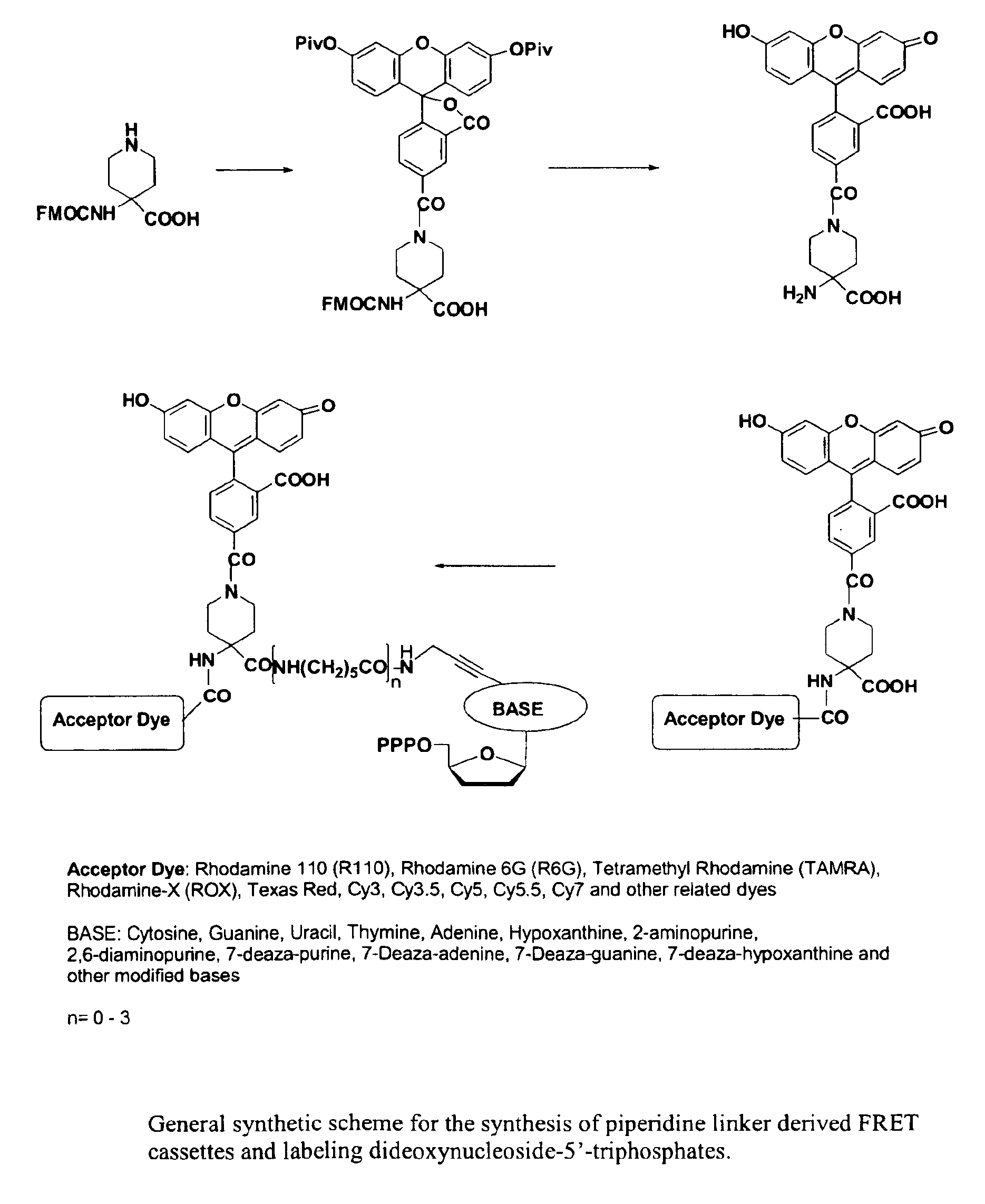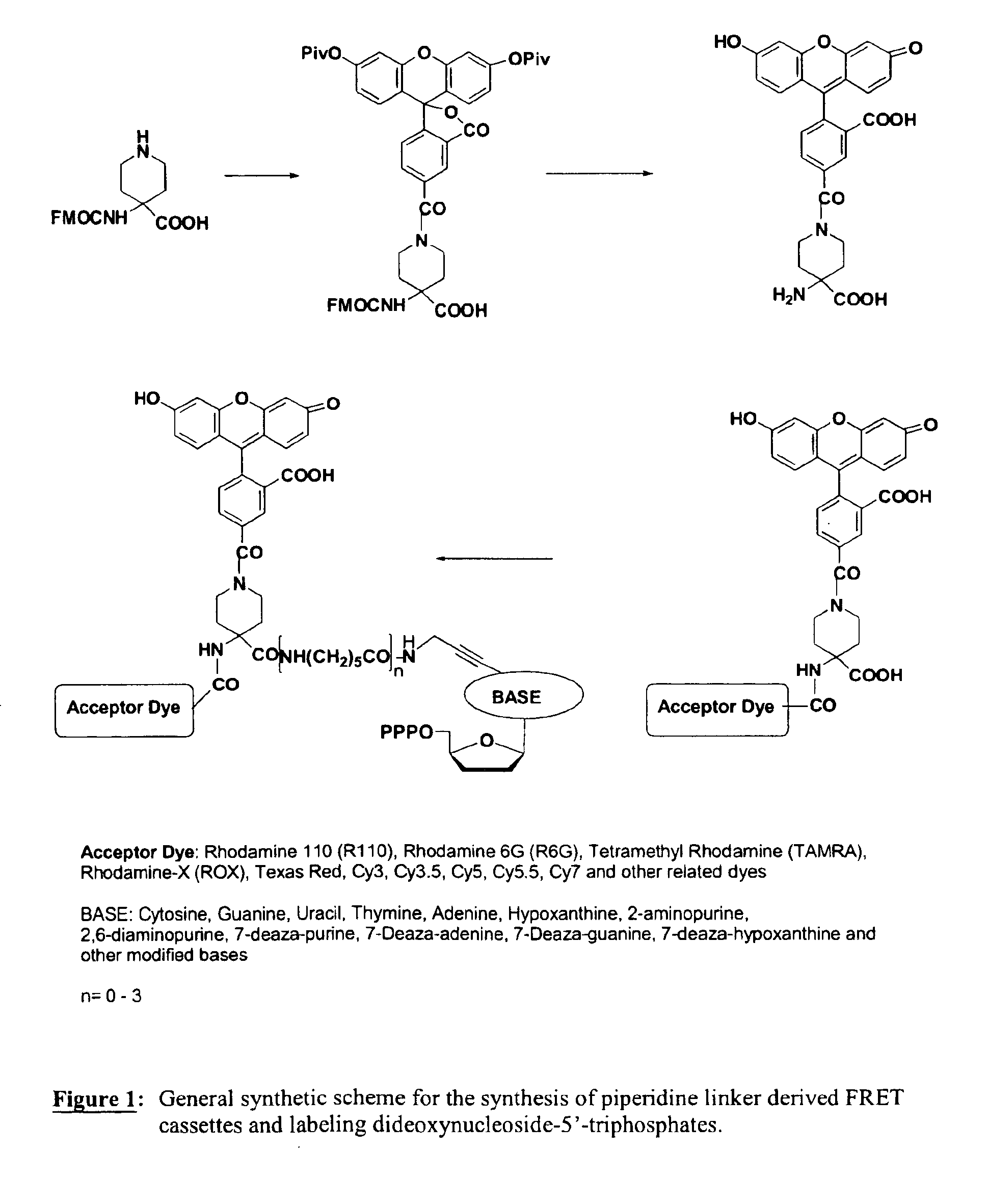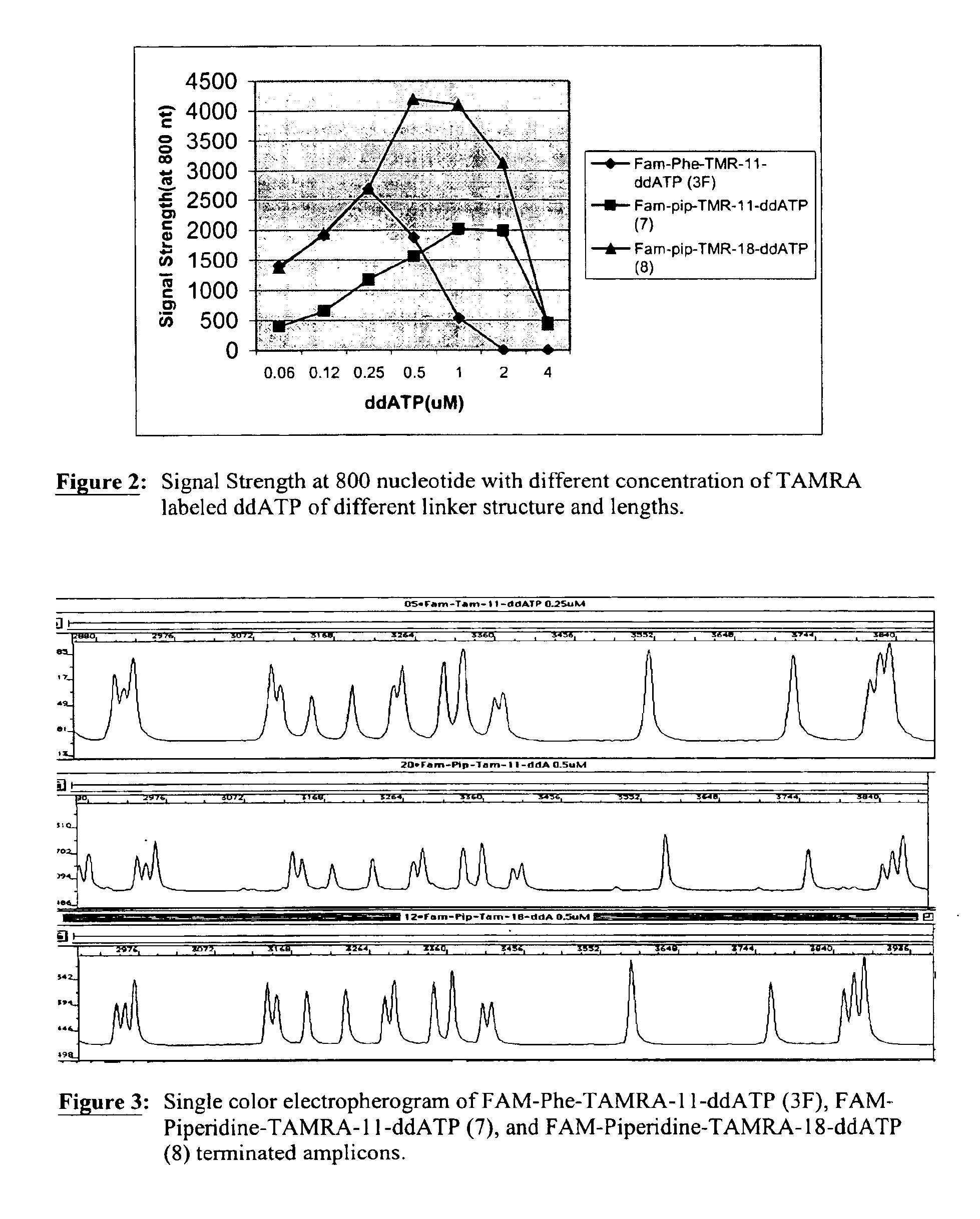Heterocyclic FRETdye cassettes for labeling biological molecules and their use in DNA sequencing
a heterocyclic fret and cassette technology, applied in the direction of peptides, immunoglobulins, metal/polymethine dyes, etc., can solve the problems of inefficiency, low brightness, and low brightness of current et dye terminator sets, and achieve less than optimal nucleic acid bases to form dye terminators
- Summary
- Abstract
- Description
- Claims
- Application Information
AI Technical Summary
Benefits of technology
Problems solved by technology
Method used
Image
Examples
example 1
Synthesis of Piperidine Linker Derived Terminators (FAM-Piperidine-ROX-X-ddNTPs)
4-N-(dipivaloylfluorescein-5-carbonyl)-N-FMOC-piperidinyl-1,1-amino carboxylic acid (4)
N-FMOC-piperidinyl-1,1-amino carboxylic acid 1 (0.4 g, 1.0 mmol) was dried by coevaporation with anhydrous pyridine (10 ml). The dried substrate was dissolved in a mixture of methylene chloride (5 ml) and pyridine (5 ml). The reaction flask was cooled in an ice bath and a solution of dipivaloyl-5-carboxyfluorescein acid chloride 3 (1.25 mmol, prepared by treating dipivaloyl-5-carboxyfluorescein 2 with oxalyl chloride in methylene chloride in the presence of DMF) in methylene chloride (10 ml) was added. The reaction mixture was stirred at 0-5° C. for 2 h and allowed to warm to room temperature. The reaction was continued overnight and quenched by the addition of water (0.5 ml). The reaction mixture was diluted with chloroform (100 ml) and washed with water (50 ml). Organic layer was dried (sodium sulfate) and evaporated...
example 2
Synthesis of FAM-Piperidine-TAMRA-X-ddNTPs
4-N-(fluorescein-5-carbonyl)-N4-TAMRA-piperidinyl-1,1-amino carboxylic acid (9)
Compound 5 (24 mg, 0.048 mmol) was dissolved in anhydrous DMSO (5 mL) and to the stirred solution at room temperature was added DIPEA (0.1 mL, 0.58 mmol, 12 eq) followed by TAMRA-NHS ester (30 mg, 0.57 mmol, 1.2 eq). The reaction mixture was stirred overnight and the desired product 9 (60%) was isolated using a Q-Sepharose column as described for compound 6.
5-FAM-Piperidinyl-TAMRA-11-ddATP (7) and 5-FAM-Piperidinyl-TAMRA-18-ddATP (8)
Compounds 7 and 8 were synthesized from 9 on a 3.8 μmole scale using 8 equivalents of DSC, 5 equivalents of DMAP and 1 equivalent of 11- or 18-ddATP following similar reaction conditions described for 10.
example 3
Synthesis of FAM-Piperidine-R110-X-ddNTP and FAM-Piperidine-R6G-X-ddNTP
5-FAM-Piperidinyl-R110-11-ddGTP (15)
Terminator 15 was synthesized and purified from 5 via 14 following the procedure similar to that of 7.
PUM
| Property | Measurement | Unit |
|---|---|---|
| energy transfer | aaaaa | aaaaa |
| thermostable | aaaaa | aaaaa |
| size | aaaaa | aaaaa |
Abstract
Description
Claims
Application Information
 Login to View More
Login to View More - R&D
- Intellectual Property
- Life Sciences
- Materials
- Tech Scout
- Unparalleled Data Quality
- Higher Quality Content
- 60% Fewer Hallucinations
Browse by: Latest US Patents, China's latest patents, Technical Efficacy Thesaurus, Application Domain, Technology Topic, Popular Technical Reports.
© 2025 PatSnap. All rights reserved.Legal|Privacy policy|Modern Slavery Act Transparency Statement|Sitemap|About US| Contact US: help@patsnap.com



